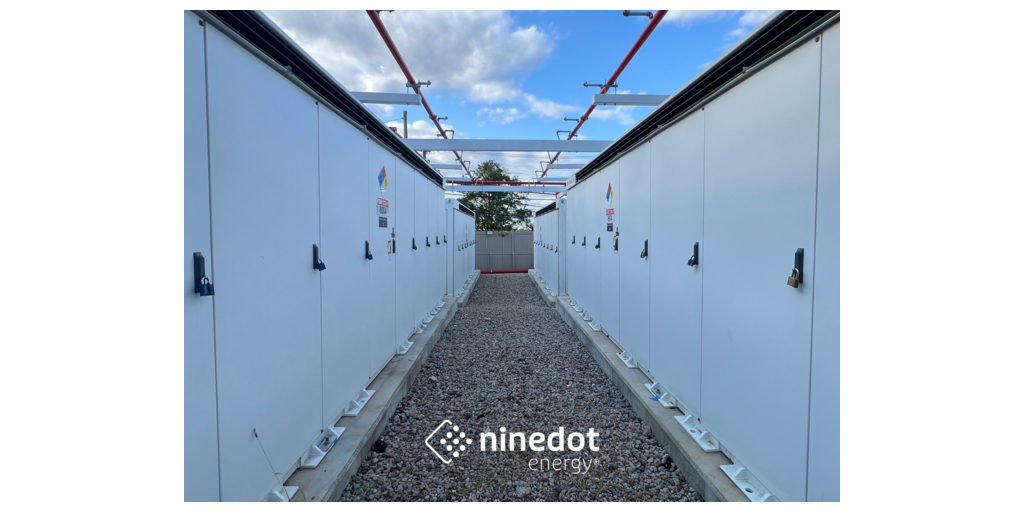Sign up for daily news updates from CleanTechnica on email. Or follow us on Google News!
Mercedes-Benz this week introduced its eActos 600 electric long haul truck at a public event near Hamburg. Where does that name come from? Actos is a trade name for heavy duty trucks from Mercedes. The “e” in front means it’s electric and the 600 means it has a 600 kWh battery.
The company says in a press release that the eActos 600 has a gross combined weight of 44 tons and a range of 500 km Even without megawatt charging, it will be capable of traveling 1000 km in a day if charged during the mandatory driver safety break periods.
Since 60% of the journeys that heavy duty tractors make in Europe are shorter than 500 km, charging infrastructure at the depot and at loading and unloading points will be sufficient in most cases. Megawatt charging for heavy duty vehicles is slowly being built in Europe. Customers can choose to have their eActos 600 fitted with megawatt charging capability now, or have it retrofitted to the trucks in the future.
“Visually, the eActos 600 is characterized by a new, puristic design with clear lines and an aerodynamic shape.” the company says. [That may be so, but it looks like a barn door to us, especially when compared to the Tesla Semi.]
A New Long Haul Truck Standard
Mercedes expects the eActos 600 to set new standards for electric long haul vehicles in terms of profitability for fleet operators. The company says it will offer customers a holistic solution consisting of vehicle technology, consulting, charging infrastructure, and services. The eActos will be available both as a tractor and as a rigid platform, with production expected to begin by the end of this year. While the trucks cost more than conventional diesel trucks, the breakeven point is expected to be about 5 years. After that, it will make money for owners every kilometer.
Karin Rådström, CEO of Mercedes-Benz Trucks, said, “The eActros 600 stands for the transformation of road freight transport towards CO2-neutrality like no other truck with a three-pointed star. It is characterized by highly innovative drive technology that can offer our customers particularly high energy efficiency and thus profitability. This makes entry into e-mobility even more attractive for fleet operators.”
The electrification of long distance trucking will change the business model of transport companies and create opportunities for competitive advantage on several levels, Mercedes claims. For example, more and more customers of transport companies are attaching importance to carbon neutral transportation of their goods. Providers who cannot meet this requirement will miss out.
The LFP Battery Packs
The eActros 600 has three battery packs, each with 207 kWh, for a total capacity of 621 kWh. The batteries are based on lithium iron phosphate cell technology and are characterized by a long service life. The batteries are expected to still offer 80% of their original capacity after 10 years and 1.2 million km.
The eActos 600 is based on a new 800 volt architecture with two electric motors and a four-speed transmission specifically designed for use in heavy duty long haul transport. The electric motors generate a continuous output of 400 kW (600 kW peak) to ensure powerful acceleration and exemplary driving dynamics. Regenerative braking not only helps replenish the batteries when slowing, it can dramatically reduce wear on brakes, reducing maintenance costs further. The eActos 600 also offers a mechanical and an electrical power takeoff which can operate tip beds, air conditioning equipment, or other accessories that are typically powered by diesel engines.
The eActros 600 will also offer an advanced suite of electronic safety measures made possible by four short range radar units, a long range radar, and a multi-function camera mounted behind the windshield. The electronics platform offers 20 times more data processing than previous systems, which means drivers can react more quickly to changing traffic conditions when necessary to hopefully avoid accidents completely or at least mitigate their consequences.
The Volvo SuperTruck 2 Breaks Cover
In 2021, the US Department of Energy initiated its SuperTruck 2 program, designed to improve the efficiency of freight operations in America. This week, Volvo Trucks unveiled its latest SuperTruck 2 model, which it says achieved a 134% increase in freight efficiency.
The SuperTruck 2 will make its first public appearance at the American Trucking Association’s 2023 Management Conference & Exhibition in Austin, Texas in mid-October. The company says it is not a concept truck, it is a live innovation laboratory that offers a glimpse of the styling and engineering trends that will define future generations of long haul trucks.
“Partnering with the DOE for the SuperTruck program provides an exciting opportunity to push the technology envelope to see what’s technically possible for heavy-duty transportation and which solutions can be scaled into production, but equally important, which solutions don’t work for scaled production,” said Peter Voorhoeve, president, Volvo Trucks North America.
“We are extremely proud of the accomplishments of our advanced engineering team who worked on SuperTruck 2. A program of this magnitude pushes the limits in every possible area — creativity, problem solving, feasibility and innovation, to which we feel we did successfully. Some of the technologies on SuperTruck 2 will most certainly shape the future of trucking and change everything we once thought possible.”
DOE’s SuperTruck 2 program is intended to accelerate the development of cost-effective advanced efficiency technologies not currently available in the market. For SuperTruck 2, all participating OEMs were given the goal of demonstrating more than 100% improvement in vehicle freight efficiency [ton-mile-per-gallon]. Volvo Trucks met that goal and exceeded its internal stretch goal of 120% freight efficiency improvement relative to the 2009 baseline, achieving 134% under real world demonstrator validation.
Better Aerodynamics & Better Weight
For Volvo Trucks’ SuperTruck 2 program, advanced aerodynamics are the key to optimizing fuel efficiency. It starts with a cab perfectly wedge-shaped from front to back, including a raked and wraparound windshield, a front end designed around a downsized cooling package, a fully aerodynamic trailer with gap fairings, skirts, and boat tail, as well as adjustable ride height. Volvo Trucks also replaced the traditional hood- and cab-mounted mirrors with a streamlined camera monitoring system to reduce the drag by more than 4%.
The entire tractor trailer combination was designed to smoothly displace air with minimal resistance, resulting in 50% lower drag than Volvo Trucks’ 2009 baseline. This represents a roughly 20% improvement in aerodynamic drag compared to Volvo Trucks’ SuperTruck 1.
Volvo Truck engineers also incorporated several weight reduction strategies to achieve a significantly reduced curb weight of 27,000 pounds for the combined truck and the trailer. Volvo Trucks chose to utilize a 4×2 configuration, which is not common in the U.S. but is frequently utilized in Europe, using fewer axles for the same payload. The truck was designed so it could be applied to a 6×2 or 6×4 configuration, but that was not part of the specific demonstrator validation for this program. The shorter cab design is lightweight and paired with an aluminum chassis that uses a lightweight optimized drive axle system with a single composite driveshaft.
Volvo Trucks also worked with the project partner tire manufacturer to include lightweight, smaller 19.5-inch advanced low-friction tires on both the SuperTruck 2 and its custom trailer. One important improvement is an all-electric HVAC system that allows the driver to avoid idling during rest breaks and still have power for amenities.
“The project team deliberately focused on driving in real world conditions for testing. Data wasn’t just gathered in a lab or on flat, empty roads with optimal conditions and a light load. Instead, our SuperTruck 2 was tested in real-world scenarios on roads with traffic and elevation changes with a GCVW of 65,000 lb,” added Voorhoeve.
“This is the most aerodynamic and efficient truck Volvo has built to date, and we achieved a freight efficiency that demonstrates the potential for technology innovations to be developed commercially. Our engineers have already begun implementing some of the learnings from SuperTruck 2 into our future truck models. The future of trucks is just around the corner.”
The SuperTruck2 from Volvo Trucks is not electric, but the efficiency gains it has achieved will benefit the electric long haul truck fleet of the future.
Have a tip for CleanTechnica? Want to advertise? Want to suggest a guest for our CleanTech Talk podcast? Contact us here.
EV Obsession Daily!
I don’t like paywalls. You don’t like paywalls. Who likes paywalls? Here at CleanTechnica, we implemented a limited paywall for a while, but it always felt wrong — and it was always tough to decide what we should put behind there. In theory, your most exclusive and best content goes behind a paywall. But then fewer people read it!! So, we’ve decided to completely nix paywalls here at CleanTechnica. But…
Thank you!
Tesla Sales in 2023, 2024, and 2030
CleanTechnica uses affiliate links. See our policy here.





